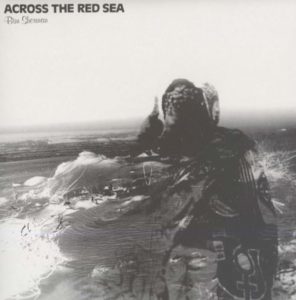MHQ: Ist das die beste Reggae-Compilation?
Michael: Es ist eine verdammt gute Zusammenstellung, sicher der Verkaufsschlager Nr. 1 von Soul Jazz Records, was ihre Ausgrabungen angeht aus den Archiven von – er war ein harter Bursche, aber er wurde gern so genannt – Sir Clemens Coxsone Dodd; tolle Kompilationen, die gibt es in berrächtlicher Menge, nicht nur bei Soul Jazz, auch die „Trojan Box Sets“ fallen mir da ein. „The Harder They Come“ von Jimmy Cliff war ja im Grunde die erste grosse Zusammenstellung, und mit ihr landete der Reggae im Bewusstsein der Westländer.
MHQ: Wie hast du „100 % Dynamite“ entdeckt?
Michael: Ein Bekannter eines Bekannten galt als Roots Reggae-Spezialist, und er brachte an einem Nachmittag ins Waldhäuschen meines Kumpels einen Stapel alter Schallplatten mit, teilweise Originalpressungen aus Kingston. Und was ich da hörte, machte mich baff. Da waren sicher auch Leute dabei, die auf „100%“ versammelt sind: Ken Boothe, Horace Andy (der apäter auf grossartigen Massive Attack-Platten auftauchte), Lee Perry, Sound Dimension, solche Kaliber!
MHQ: Also eine Einstiegsdroge.
Michael: Auch eine Partydroge. Daniel Lanois, um den es so still geworden ist zuletzt, hat mir mal erzählt von einer Waldparty mit U2, und dass sie alle total auf „100 % Dynamite“ abgefahren sind. Er erzählte auch, wie faszinierend er eine Musiksprache fände, in den Zeiten, wo sie noch auf der Suche sei, nicht perfekt formuliert, und, hier etwa, der Calypso und ältere Sachen noch ein wenig im Hintergrund mitschwingen.
MHQ: Kannst du ein Lieblingsstück benennen aus dieser Sammlung?
Michael: Hmm. Jaaa, aber nur deshalb, weil dieses Album im letzten Jahr neu rausgebracht wurde, eine Art Jubiläumsausgabe mit Extratracks. Vinyl und CD. Da habe ich sie wieder gehört. Es gibt ja etliche grandiose Platten aus diesem „Studio 1“, Soul Jazz hat das ganze Arbeit geleistet. Also, das Tolle an solchen Sammlungen ist ja, nebenbei, die Erkenntnis: was für begnadete Sänger ballen sich da in der Urzeit des Reggae. „Scenius instead of Genius“, würde Brian Eno sagen. Eine völlig absurdistische Mythologie um den zwielichtigen Haile Selassie als Heilsbringer, aber unfassbar reichhaltige Musik. Wer da zum Rastafari wird, hat zuviel Ganja geraucht. Ah, ich schweife ab. Kürze bitte mein Geschwafel aus dem Diktafon! (Nö; Anm. des Herausgebers) Also, kurz und grossartig: ein „Killertune“ fällt mir sofort ein: „Drum Song“ von „Sound Dimension“, mit Jackie Mittoo an den Tasten! Laut hören, im Dunkeln hören! Natürlich die volle Dröhnung!

